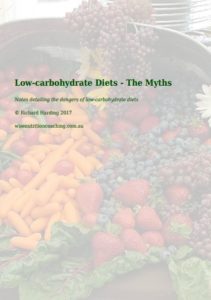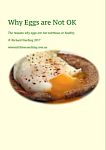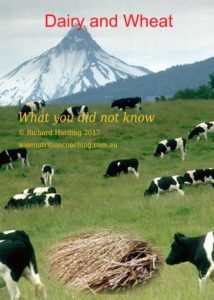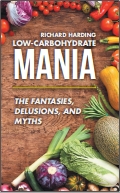Impact of Gluten-free Diets
Prevalence and Motivations
An 2015 Australian study examined the prevalence and motivations of those choosing a gluten-free diet in Australia. 1
Some highlights of the survey were:
- Approximately 4 times more women than men chose a gluten-free diet.
- 53% on a gluten-free diet also avoided dairy
- For 56%, the primary reason for a gluten free diet was based on symptoms, mainly gastrointestinal
- 16% chose a gluten-free diet based on medical diagnostic advice
- Those choosing a gluten-free diet had a greater receptiveness to complementary medicine than in the general population
For those who based their decision up symptoms, the top reasons with a incidence of greater than 10% are listed below.
| Symptom | Incidence (%) |
|---|---|
| Bloating or wind | 79 |
| Stomach discomfort or cramps | 55 |
| Constipation | 31 |
| Diarrhoea | 21 |
| Heartburn of indigeation | 16 |
| Skin problems | 14 |
| Mucus buildup | 13 |
| Headaches | 10 |
A list of the most common allergenic foods is listed below. Wheat does not rate highly on the list of allergenic foods. 2
There can be variations in such lists due to how the data is collected and the regions that are involved. Apple and carrot can rate highly if fruit and vegetables are separated. This list is consistent with other allergenic list. Dairy, especially cow’s milk, is particularly allergenic.
| Food Item | Children | Adults | Total |
|---|---|---|---|
| Milk | 2.23 | 1.89 | 1.97 |
| Shellfish | 0.55 | 1.91 | 1.60 |
| Other | 1.32 | 1.67 | 1.59 |
| Fruits | 1.14 | 1.61 | 1.50 |
| Tree nut | 1.73 | 1.07 | 1.22 |
| Vegetables | 0.45 | 1.29 | 1.10 |
| Peanut | 1.77 | 0.78 | 1.00 |
| Egg | 1.23 | 0.67 | 0.80 |
| Wheat | 0.45 | 0.86 | 0.77 |
| Fish | 0.18 | 0.60 | 0.51 |
| Soy | 0.32 | 0.16 | 0.20 |
| Sesame | 0.23 | 0.07 | 0.10 |
| All foods | 7.14 | 8.34 | 8.07 |
Comparison Standard Diet and Gluten-Fee Diet
There is a substantial difference between a standard western diet and a gluten-free diet. If a gluten-free diet is no warranted, a gluten-free diet may have unintended health consequences that are not beneficial as well as creating an additional inconvenience.
Consumption of complex carbohydrates (polysaccharides) and dietary fibre can be significantly less.
Impact of Low-Fibre Intake
The changes to the complex carbohydrate and dietary fibre has a significant impact on intestinal bacteria. 3
Beneficial bacteria Faecalibacterium prausnitzii, Bifidobacterium and Lactobacillus was decreased as a result of the gluten-free diet.
Enterobacteriaceae which includes the dangerous Escherichia coli, Klebsiella, Salmonella, Shigella and Yersinia pestis was increased.
Satiety
With the removal of complex carbohydrates, satiety can be reduced. Foods that are filling are: high in starches, complex carbohydrates and dietary fibre; high volume foods; and have low energy density.
Also tasty foods flavored with herbs, spices and other condiments are more satisfying. A list of foods and their satiety rating according to A satiety index of common foods are listed. 4
The comparison is made with an equal amount of energy (1000 kJ or 240 kCalories) of food compared with white bread.
- Potatoes, boiled 323%
- Porridge, Oatmeal 209%
- Apples 197%
- Brown pasta 188%
- Beef 176%
- Baked beans 168%
- Grain bread 154%
- Cheese 146%
- Brown rice 132%
- Eggs 150%
- Bananas 118%
Immune System Response
The reduction of beneficial intestinal bacteria compromises the response to the immune system inflammatory hormones TNF-α, interferon-γ, IL-10 and IL-8. 3
Solutions
If necessary, it is possible to have a healthy, gluten free diet.
Carbohydrates
The pseudo-cereals (amaranth, quinoa, buckwheat), beans (particularly lentils) and nuts provide a source of dietary fibre and complex carbohydrates. Particular attention should be given to increasing the amount of legumes (beans and peas).
Glucans are a class of carbohydrates where long chains of glucose are linked together. These are classified on how the glucose molecules are linked together. Examples are α-1,6-glucan and β-1-3-glucan. β-glucans are an important dietary component for the immune system. Whole-grain wheat, barley and oates have the highest source of β-glucans. Miss out on whole-grains then you are most likely missing out on β-glucans. Mushrooms, Chinese mushrooms and seaweed are other sources. It is worthwhile taking Chinese mushrooms as supplements to ensure an adequate supply of β-glucans.
Protein
There is a tendency to increase the amount of animal protein in gluten-free diets due to the consumption of meat, milk and dairy products, eggs and fish. This contributes to a reduction of beneficial bacteria.
Legumes are an important component of a gluten-free diet (and any other diet). 5
Legumes, nuts, seeds, pseudo-cereals and gluten-free cereals including millet and teff are sources of protein.
Phytonutrients
Cereals are very high in phytonutrients which can more than adequately replaced by leafy green vegetables, millet, pseudo-grains (buckwheat and quinoa), berries (particularly plums and any other dark fruits), herbs and spices.
These foods are also high in vitamins and minerals.
Related articles
What is the Problem with Wheat?
Wheat and Inflammation
Impact of a Gluten-Free Diet
Wheat and the Distorted Views of William Davis
Last updated on Tuesday 16 January 2024 at 05:01 by administrators
Footnotes
- Golley, S. et al. (2015) Motivations for avoiding wheat consumption in Australia: results from a population survey. Public Health Nutrition. 18 (3), 490–499.
- Soller, L. et al. (2012) Overall prevalence of self-reported food allergy in Canada. Journal of Allergy and Clinical Immunology. 130 (4), 986–988.
- De Palma, G. et al. (2009) Effects of a gluten-free diet on gut microbiota and immune function in healthy adult human subjects. British Journal of Nutrition. 102 (08), 1154.
- Holt, S. H. et al. (1995) A satiety index of common foods. European Journal of Clinical Nutrition. 49 (9), 675–690.
- Saturni, L. et al. (2010) The Gluten-Free Diet: Safety and Nutritional Quality. Nutrients. 2 (1), 16–34.





